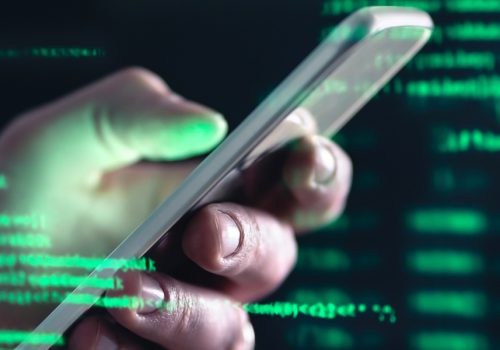Imagine waking up one morning and thinking, “Is protecting my data really that complicated?” You pop open your laptop and see your camera covered by that trusty sticky note you slapped on there months ago. It’s not high-tech-heck, it’s not even pretty but it felt like the simplest way to keep prying eyes at bay. That’s the moment you realize cybersecurity isn’t about complicated algorithms or menacing hackers in dark hoodies. It’s about everyday people doing what they can, sometimes in the most unconventional ways to stay safe.
I’ve spent years helping organizations navigate compliance frameworks (from ISO/IEC 27001 to PCI DSS, and beyond) and here’s what I’ve learned: technical defenses alone don’t cut it. Real security is driven by how people think, feel, and act. We’re wired to avoid unnecessary hassle, and if a quick fix is easier than learning a complex system, we’ll grab the sticky note every single time.
In this guide, we’ll explore how to make cybersecurity less like rocket science and more like basic hygiene—something you naturally do because it just makes sense. You’ll see how your everyday risk management decisions (like driving with a seat belt or double-checking if the front door’s locked) map perfectly to securing your digital life. Ready to simplify? Let’s get started.
Because here’s the truth: it doesn’t matter how advanced your security tools are if people aren’t on board. Once we shift our mindset from “security is someone else’s job” to “hey, it’s just like safeguarding my own valuables,” we start making smarter choices—no PhD in computer science required.
The People Problem
Have you ever noticed how we often blame “weak passwords” or “not enough budget” for security fails, but rarely point the finger at ourselves? Sure, outdated software and misconfigured firewalls are real problems—but nine times out of ten, the weakest link isn’t the tech, it’s us. Whether we’re reusing the same password everywhere or ignoring software updates, our choices, or lack thereof, create the perfect opportunity for cybercriminals to slip through.
From Sticky Notes to Car Thefts—It’s All about Human Behavior
Let’s circle back to our “sticky note over the laptop camera” trick. It’s not the most glamorous solution, but it’s straightforward and instantly understandable. It’s a perfect example of human nature: if the “high-tech” route is too complicated, we default to what’s easiest, even if it’s a little odd.
The same principle applies to more serious breaches. Think of how you might steal a car. You’ve got three ways:
- Break into the car (tech side),
- Steal the keys (authentication side), or
- Con the driver (social engineering side).
Sounds dramatic, right? But that’s how hackers operate in the cyberspace. They look for holes in technology, guess, steal or break way to use credentials, or trick people with emails that play on trust and urgency. If the technology is strong, they’ll pivot to the human element, searching for shortcuts and slip-ups.
Why It’s Not Just About Compliance
Here’s a common misconception: “If we pass that cybersecurity audit, we’re good.” Don’t get me wrong, compliance is useful; frameworks like ISO/IEC 27001 or SOC 2 ensure organizations follow best practices. But compliance alone doesn’t necessarily change behavior. People might go through security awareness training (usually with one eye on the clock), pass the quiz, and then go right back to clicking on every link that lands in their inbox.
The real hurdle? Human habits. We can create a fortress of firewalls and encryption, but if someone props open a door for convenience (or forgets to lock their laptop because they’re just running to grab coffee) those efforts unravel fast. Until we make security second nature, no compliance checklist can fully protect us.
Making People the Solution, Not the Problem
At its core, this is good news. If people can be the weakest link, they can also be the strongest defense. One genuine conversation about why a strong passphrase matters or how a phishing scam typically feels “off” can do more than a lengthy policy document nobody reads. A no-nonsense, straightforward approach helps folks internalize security because it doesn’t feel like a chore. It feels logical, like wearing a seatbelt.
In the next section, we’ll tackle the “why” behind our everyday security decisions. Spoiler alert: you’ve been doing risk management your entire life, whether you realized it or not. By framing cybersecurity in the same way – Risk vs. Reward – we’ll show just how natural it can be to pick up smart habits that keep both your data and peace of mind intact.
A Risk-Based Approach
Ever hesitated about going bungee jumping, then decided, “Nope, too risky,” or maybe “Yes, I’ll try it, life’s too short”? That right there is risk management in action. We do it every day without even realizing. Maybe you lock your car door to keep your phone safe, or buy travel insurance before an overseas trip. All of these are choices we make by weighing what we might lose against the potential benefit, or just peace of mind.
So why treat cybersecurity any differently? The same framework applies. If you’re comfortable protecting your personal space – like not leaving your front door wide open – then you already understand the basics of safeguarding your digital world. It’s a matter of identifying what’s at stake (sensitive data, financial information, personal privacy, etc.) and asking how much you’re willing to do to protect it.
In the world of compliance, “risk-based approach” might sound lofty but it simply means focusing your time, energy, and resources on what poses the greatest threat. Whether you’re tackling an ISO/IEC 27001 audit or just making sure your Gmail account is locked down, it’s all about priorities. After all, you don’t buy 10 padlocks for your bike if you’re worried about your car being stolen. You look at the most likely problem and solve for that.
Here’s the kicker: people aren’t always conscious of these daily risk-based decisions. We’ll secure our homes and vehicles, yet we’ll reuse the same password everywhere. It’s not that we don’t care; it’s that we haven’t linked our usual risk antenna (like “Do I really want to jump off this bridge with a bungee cord?”) to our digital habits. Call it “conscious engineering” if you like. We’re simply bridging that mental gap, so the same caution you practice in the real world extends online.
It used to be easier to manage our privacy when most of life was offline. Now, with social media, financial apps, and workplace tools all on our phones, the stakes are higher—but the principles remain the same. Understand what you value, measure the risk, and act accordingly. The big difference is the sheer scale of digital exposure. Without a clear, no-nonsense explanation of what to do, many people feel overwhelmed and tune out. But once we frame cybersecurity in terms of everyday risk management, it clicks: “Oh, I already do this when I decide which credit card to carry or which ID to bring along. This is just another layer of that same mindset.”
Now that we’ve laid the groundwork on why people – and their everyday decisions – are at the heart of security, it’s time to talk solutions. In the next section, we’ll explore how to strip away the tech jargon, simplify security processes, and help everyone feel empowered rather than paralyzed by the details. Because at the end of the day, cybersecurity should feel as natural as locking your front door before you head out.
Making Cybersecurity Simple for Everyone
At this point, we know two things: cybersecurity hinges on people far more than on technology alone, and we’ve been quietly mastering “risk management” in our everyday lives without even trying. So how do we turn these revelations into something practical? Simple, by treating security as a mindset, not just a checklist.
Mindset over Process
Let’s face it, we can memorize all the steps in a security manual and still get duped if we’re cornered by the right mix of urgency and fear (think: “Your account has been hacked! Click here now!”). That’s why an ingrained security mindset is vital. Instead of reciting a list of rules, you’re automatically on alert for anything that looks fishy. It’s the difference between driving a car by reading every line of the manual vs. instinctively knowing to brake when the light goes red.
Jargon-Free Language
Ever sat through a security briefing and thought, “Wait, what do these acronyms even mean?” You’re not alone. The cybersecurity world is brimming with technical terms, such as SIEMs, IDS, or multi-factor whatchamacallit that might be useful for experts but totally alienate everyone else. When we swap out the acronyms for plain English, people actually get what we’re saying.
- Instead of telling users to enable “multi-factor authentication,” say “turn on a second layer of login protection like a text code to keep your account safe.”
- People understand the benefit of that extra step, rather than feeling overwhelmed by a mouthful of geek-speak.
Empowering Independence
It’s tempting for security pros to lock everything down and force people to follow a rigid process. But in reality, that just frustrates users and can create shadow IT where employees find workarounds that aren’t approved but get the job done faster. A better strategy? Equip people with the tools and knowledge they need to make good decisions on their own.
- Let teams test different secure tools that still meet company policies.
- If someone slips up, walk them through the why and the how so they learn and move on, rather than clamming up out of fear.
When you become a trusted mentor rather than a security dictator, people are more likely to adopt safe habits. They’ll come to you with questions instead of hiding things.
Real-World Routines
Cybersecurity doesn’t need to feel like rocket science. Chances are, you already do half of what’s necessary in your personal life, like glancing around the parking lot before hopping into your car or double-checking your wallet. Translating those routines into digital habits can be just as intuitive:
- We lock doors at home, so set a PIN or passphrase on devices.
- We don’t open the door for random strangers, so treat sketchy emails or pop-ups the same. If something’s suspicious, don’t let it in.
- We keep a spare key hidden for the house or car, right? Same goes for critical files—regular backups mean you’re not stranded if something goes wrong.
And the list can continue for a long time. You know what you have to do, so why aren’t you doing it? Sometimes it’s sheer habit; other times it’s convenience or simply forgetting how real the risks can be. The good news? By shifting our mindset and cutting through the technical clutter, we can transform these security “should-dos” into everyday, no-brainer habits; just like brushing your teeth or locking your front door. For too long, cybersecurity has leaned on scare tactics, doom and gloom about hackers lurking in every corner. While we shouldn’t ignore threats, leading with fear usually leads to paralysis.
Conclusion: Before-and-After Transformations
Imagine two scenarios:
- Before: You’ve got a handful of security policies collecting virtual dust, a team that’s vaguely aware of them, and a general sense of dread that one slip-up could invite disaster. Everyone feels like cybersecurity is “somebody else’s department,” and all those complex rules might as well be quantum physics for how little they’re followed.
- After: You’ve integrated security into everyday thinking. Passwords aren’t random codes no one remembers; they’re passphrases that make sense. Phishing tests actually resonate because people connect them to their own experiences with suspicious links. Technical jargon? Replaced by clear, friendly explanations that stick in your memory.
The transformation comes down to one core principle: people first. When we see cybersecurity as a natural extension of our daily behaviors (locking doors, verifying identities, and staying alert to our surroundings) it stops being this towering, fear-inducing concept. Instead, it becomes part of who we are and how we operate, both online and offline.
By embracing a risk-based approach, we prioritize what really matters and cut away the “nice to haves” that just create confusion. And when we let go of the scare tactics and jargon, we give people something they can latch onto simple, actionable steps that make security not only doable, but genuinely rewarding.
Final Call to Action
Next time you read about the latest “major breach” or a shady phishing attack, don’t just scroll by and shrug. Ask yourself: “What everyday action can I take today to shore up my digital defenses?” Maybe it’s changing that one password you reuse everywhere. Maybe it’s flipping on multi-factor authentication for your primary email. Or maybe it’s just reminding a friend or coworker to watch out for suspicious links. Small steps, big impact – exactly how real security gains traction is by leveraging that 1% on daily basis.
Security might be complex under the hood, but it doesn’t have to feel that way. With a clear head, a little conscious effort, and the right dose of encouragement, everyone can stay safer online without drowning in technical details. After all, if you already know what you have to do, why not start doing it right now?









